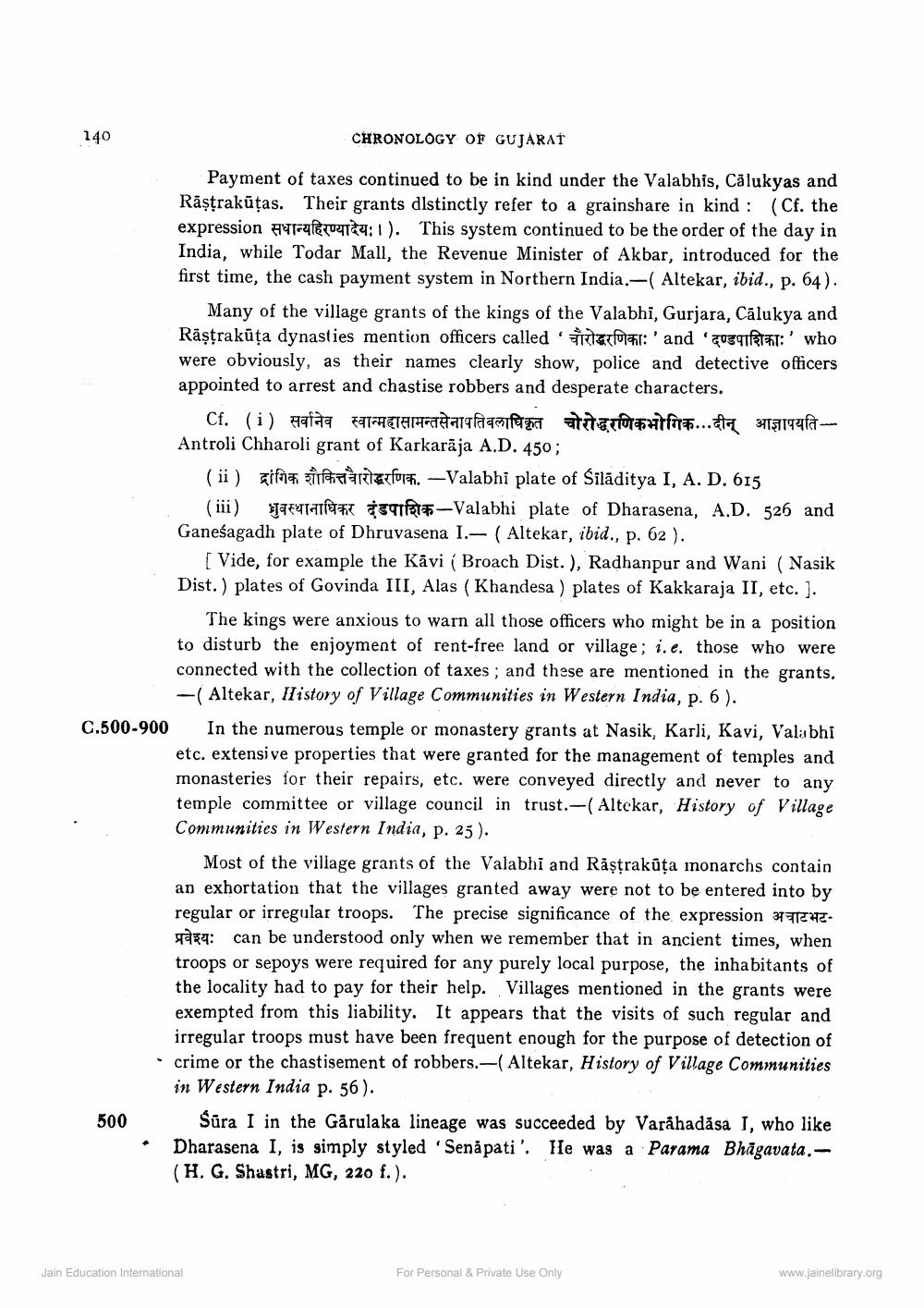________________
140
CHRONOLOGY OF GUJARAT
Payment of taxes continued to be in kind under the Valabhis, Cālukyas and Rāştrakūtas. Their grants distinctly refer to a grainshare in kind : (Cf. the expression 4104124:1). This system continued to be the order of the day in India, while Todar Mall, the Revenue Minister of Akbar, introduced for the first time, the cash payment system in Northern India.- Altekar, ibid., p. 64).
Many of the village grants of the kings of the Valabhi, Gurjara, Calukya and Rastrakuta dynasties mention officers called 'चौरोद्धरणिकाः ' and 'दण्डपाशिकाः' who were obviously, as their names clearly show, police and detective officers appointed to arrest and chastise robbers and desperate characters.
Cf. (i) af FTFACTER atafaqniform atitariutut for... 3471941Antroli Chharoli grant of Karkarāja A.D. 450;
(ii) gifna sifaria fora. -Valabhi plate of Silāditya I, A. D. 615
(iii) JAFT TATT ETTE -Valabhi plate of Dharasena, A.D. 526 and Ganesagadh plate of Dhruvasena 1.- (Altekar, ibid., p. 62 ).
[Vide, for example the Kävi ( Broach Dist. ), Radhanpur and Wani (Nasik Dist. ) plates of Govinda III, Alas ( Khandesa ) plates of Kakkaraja II, etc. ].
The kings were anxious to warn all those officers who might be in a position to disturb the enjoyment of rent-free land or village; i.e. those who were connected with the collection of taxes; and these are mentioned in the grants.
- Altekar, History of Village Communities in Western India, p. 6). C.500-900 In the numerous temple or monastery grants at Nasik, Karli, Kavi, Valabhi
etc. extensive properties that were granted for the management of temples and monasteries for their repairs, etc. were conveyed directly and never to any temple committee or village council in trust.- (Altekar, History of Village Communities in Western India, p. 25).
Most of the village grants of the Valabhi and Râştrakūța inonarchs contain an exhortation that the villages granted away were not to be entered into by regular or irregular troops. The precise significance of the expression HTara: can be understood only when we remember that in ancient times, when troops or sepoys were required for any purely local purpose, the inhabitants of the locality had to pay for their help. Villages mentioned in the grants were exempted from this liability. It appears that the visits of such regular and
irregular troops must have been frequent enough for the purpose of detection of · crime or the chastisement of robbers.-(Altekar, History of Village Communities
in Western India p. 56). 500 Śūra I in the Gårulaka lineage was succeeded by Varåhadāsa I, who like
Dharasena I, is simply styled 'Senåpati'. He was a Parama Bhagavata.(H. G. Shastri, MG, 220 f.).
Jain Education Interational
For Personal & Private Use Only
www.jainelibrary.org




